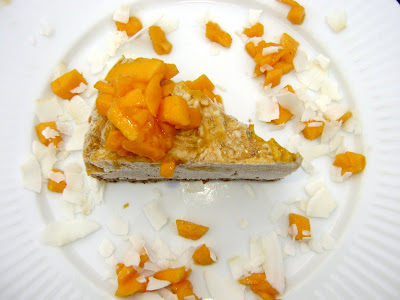You and I are beams of light, shooting stars, balls of glowing vibrational energy.
And to burn our very brightest, let's add some super fuel to that internal fire, and see what kind of creativity comes glistening, gleaming, shining through!
We can eat anything to get "full" - to satisfy that pure animal appetite that is a grumbly tummy. But what are we getting full of? I want to be full of the materials that make me my best light-self; full of joy, full of love, full of boundless energy and creative impulse. Those materials come to me through plants, which have kindly synthesized nutrients from the earth, the sky and the water in delectably digestible morsels. Their life-force, ingested, adding to my own - imagine the possibilities!
Beyond the beautiful plant foods, there is another class of foods that are exceptionally high in essential nutrients. These are the superfoods, which nutritional visionary
David Wolfe describes as straddling the categories of both food and medicine. These foods are among the most nutritionally dense and healing substances on the planet. When we eat them, we not only boost our bodies with vitamins and minerals, we also take on an extremely high level of vibrational energy. You only have to eat a little bit of these foods to feel the spirit of these plants awaken within you.

If you're among the superfood skeptics, bear with me a moment. I'm not talking fads here, I'm talking about foods that have been used medicinally for hundreds (if not thousands) of years. Our contemporary knowledge of the superfoods often comes out of ancient traditions who recognized their power. Take the
goji berry, for instance. Chances are if you're reading this, you've not living under a rock and you've seen the ubiquitous
goji berry, or its concentrated powder or juice, at your local health food shop. This tart little ruddy guy is so much more than the latest thing in health foods - it has been celebrated within Traditional Chinese Medicine for centuries as a powerful longevity-booster, a claim which contemporary scientific study corroborates. It belongs to a class of foods known as adaptogens - substances that, by working on the body in several therapeutic ways, increase overall health.
Gojis support the adrenal glands, helping the body deal with stress, while also strengthening the immune system, creating alkalinity, and directly supporting the liver, eyes and blood. On a nutritional level,
gojis are a complete protein source, chock full of all the essential amino acids, as well as a range of trace minerals and a host of vitamins. They are also rich in anti-oxidants.
Other superfoods that I know (intimately) and love (deeply) include
cacao,
spirulina,
maca,
honey, bee pollen, hemp seeds,
coconut, acai berries, sea vegetables, chia seeds and aloe vera, among others. I find these foods so much fun to incorporate into my recipes, and they make me feel AMAZING. Keep an eye out for my superfoods series, in which I discuss different superfoods in depth and explore their potential culinary uses.
The one caveat I would add about superfoods is that while they may be helpful in treating illness, and there are certainly cases where they have contributed to profound healing, they are at their most effective when consumed regularly in order to support ongoing health, longevity and vibrancy. This doesn't mean swallowing tablets or capsules! Superfood ingredients are more and more readily available in health and natural food stores or through the internet, and they are incredibly fun to play with across a range of recipes.
You might just find that the more superfoods you get into your body, the more inspired you feel to create new recipes with them. Go with it!
What are your favorite superfood recipes - what do you eat that really gets you glowing?



















